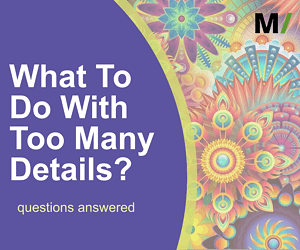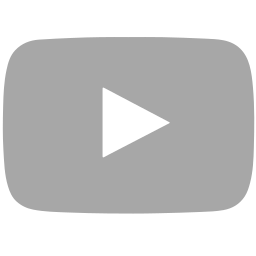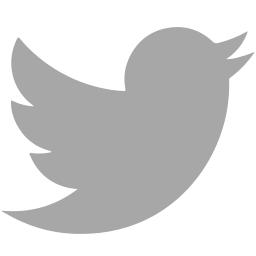Taking the right notes is difficult. You not only have to figure out what to write down. You also have to make sure you don’t write too much. Or even worse… not enough information!
What to do when you don’t have enough information, but you ended up with too much?
Today you will learn more about that.
Why Make your notes difficult to read?
There is enough information to go through. You have books, online lectures, and videos to digest. It is up to you to take all that information and create an effective overview.
The problem is that you use your filter to find nuggets of information. You should be focusing on the information you need. What will you discuss during your exam? What are the questions your professor likes you to answer?
When you take notes that are not good enough, and exam-focused, you probably fail your class.
What we end up doing is takes extensive notes… so many notes… Probably so many that we have to create a summary of our summary!
Or you end up with notes that have almost everything highlighted! I’ve seen this happen with many people who attend my live classes.
Isn’t there a better way to deal with your notes?
Let’s have a look at 5 solutions.
5 ways to not end up with too many detailed notes
When you end up with too many details in your mind map, use the solutions below. They will help you remove excessive details. The result is a clean looking mind map you can use (for studying).
1. start with the end in mind
You should never just start reading in your study book. There is a lot of information in your book. Most of it you already (kind of) know. And the things you don’t know yet aren’t all needed.
Make sure you understand why you are reading your book. What is your outcome?
Do you study for an exam? Are you looking for general knowledge? Do you want to dig deep into a specific subject?
The moment you know your goal, you can start to focus on what you need to add to your notes.
One thing you could be doing is using a list of questions or topics for an exam. This is where you focus on when reading. Your notes help you go through the book to pass your exam.
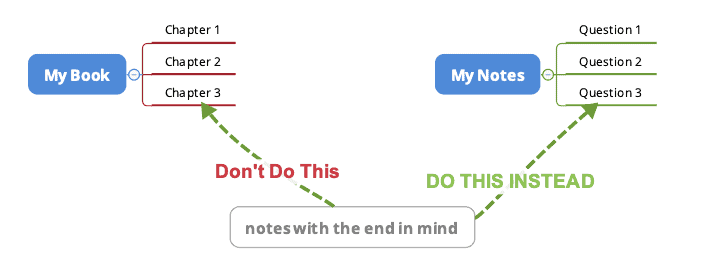
When you read because you have to inform people, you read differently. Your notes will have a different focus.
Start with the end in mind. You will be able to skip on many details from your book. The maps become clean and you won’t have to study that much!
TIP: Know who created your exam so you know what information you need to study
2. use the roll-up and notes section of mind mapping software
There are times when you have to take a lot of notes. I can think of adding definitions, terms, years, numbers, names, etc. Some books give this information a lot!. Some are professors ask many detailed questions.
The result is that you have very detailed notes.
No problem with mind mapping software tools. These allow you to roll-up branches.
This helps you to briefly hide information from your view.
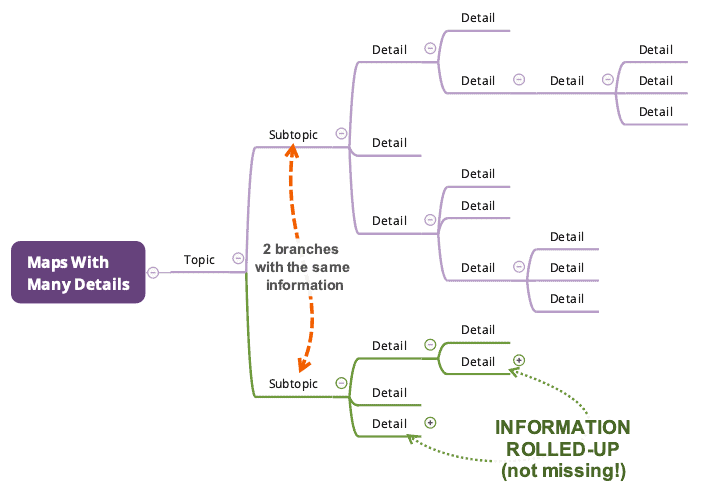
Whenever you need your information again, you click on the little + sign. That brings your information back again.
You can also use the notes section. The good mind mapping software tools have this option. It allows you to add a little note to a node in a branch.
In this note, you can store a lot of text. Think about notes and general ideas. Adding these to the mind map may make the map too crowded. Notes give you more clarity. You don’t have to remove information. You simply “hide” it in plain side.

TIP: Hide less important notes in your mind map by rolling-up branches and using the notes section
3. Don’t Just create… update your map
You don’t need to create too many mind maps. Make sure you edit your existing maps. This is a lot easier, saves time, and gives you a really good overview of your information.
There are 2 important things you have to do with your study mind maps.
First, remove information that is no longer needed. When you start going through your book, you take many notes.
After a while, all the basic information is already in your mind. You don’t need to have it present in your map.
Don’t let it stay in there! Remove the basic information you know and understand!
It is better to look at a small map with the right notes! Don’t try and capture too much information…
Having said that, you should not continue to make the map smaller. There are times when you probably have to add new information. Do that!
While you are reading, you find more nuggets of knowledge. Add them to your map. Create a complete picture of your information. This way you need only a few well-outlined maps.
TIP: Update your mind map to show the current state of your knowledge!
4. divide and conquer
When you still end up with a really large and detail-rich mind map, there are other things you can do.
The most important action to take is breaking up your map into smaller maps.
That’s right… I’ve said it! There are times you should create multiple maps!
The only reason we do this is that it is important to create a clear outline and overview. Multiple smaller maps help you achieve this.
Doing this is not that difficult:
- Take a branch that is too big. Copy it to another map.
- Add hyperlinks between the two maps
- To the original map, add 3-5 most important items from the new map (as a quick summary).

The highlights that you add to the original map are important. They help you identify what the new map is about without opening it.
When you study more and you update your map it may get smaller. If that happens, you can put the 2 maps back together.
TIP: Break up your mind maps if they get too big. It helps to improve clarity
5. understand or memorize
A mind map is like a second brain. Especially for studying, it would be better if you can absorb that second brain. This way you don’t need that second brain.
Remember that a mind map is only a tool that helps you when studying. It is not the result of a long process.
For me, the best mind map is again an empty map. You start with an empty map. You study. After a while, all the notes from your map are internalized. You don’t need the map anymore.
The best way to assimilate your second brain is by understanding and memorization.
Do that, and you will never have to use your mind map again.
TIP: The best result of a study mind map is an empty map!
BONUS: Dare to let go
I know… it is difficult to find the right things to add to a mind map (or to notes in general).
Often you know what to add when you are well into your book. Sometimes you finally know when your exam starts. 🙁
No matter what happens, you should always be careful about what you add to your map. Don’t try to add every little detail to it.
When you can’t decide what to add, use the notes section a lot. Add general information to the branches, add specific items to the notes section.
Here’s something challenging to do:
let go
That’s right, I said it. Dare to let go.
There is no way your brain allows you to remember every little detail from your book when you start.
Your information has to grow on you. Start by understanding more general concepts and ideas. After that, you focus on details.
In the beginning, you have to let go. Later on, you have time to focus on more detailed information.
TIP: Study in layers. Start with general concepts and add deeper layers later. Dare to let go!
Quick Summary
Too much detail in your map may come from several reasons. It can be insecurity, not being able to choose, or being unclear about what’s important.
It can also be that the map isn’t ready yet. You may have to update the map. Or perhaps you can use the notes section more often.
Either way, too many details in a map asks for an update.
Create a clear map. Roll-up your information. Use the note section.
The result will be a map that is easier to understand.
